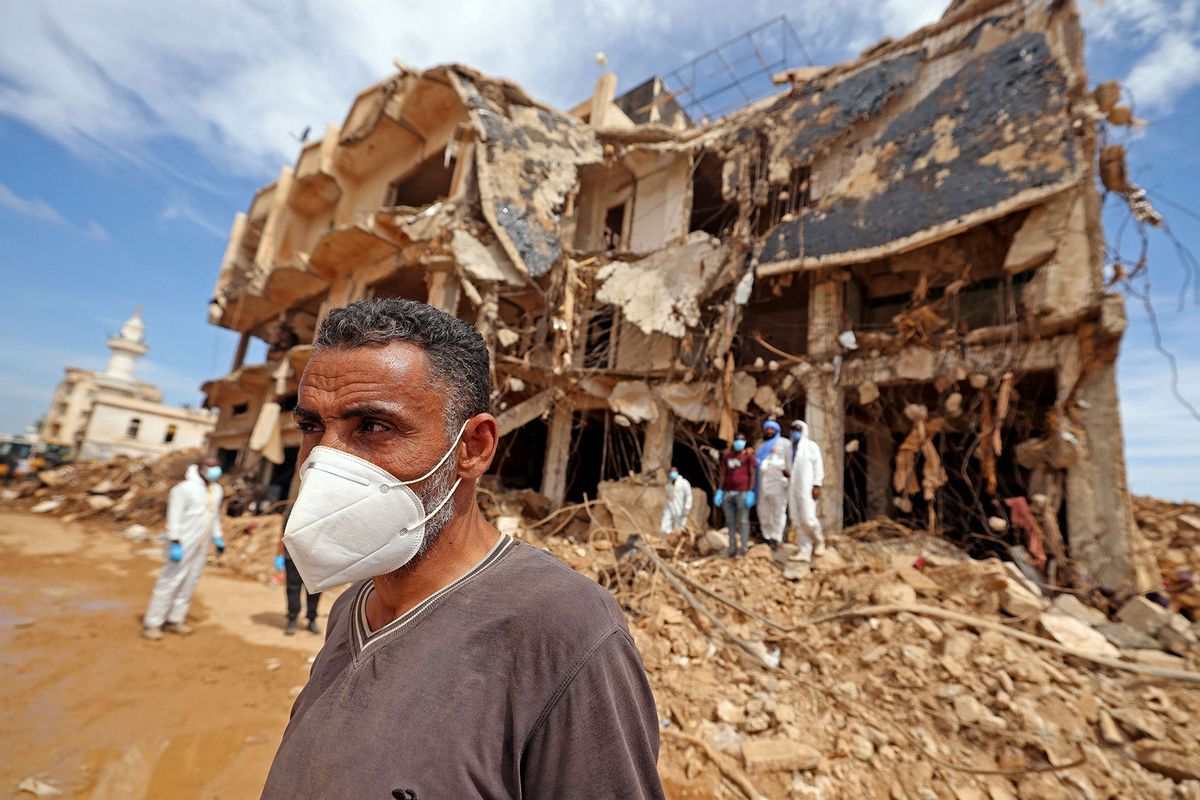Climate change linked to deadly flood in Libya that killed thousands, study finds
Climate change linked to deadly flood in Libya that killed thousands ... Salon


Climate Change Linked to Flood in Libya that Thousands Study Finds

Introduction
When two dams in the Libyan city of Derna failed last week, the result was a flood that has claimed more than 11,000 lives, with thousands of people still missing. Because there were ample advance warnings that the dams needed to be repaired, much blame has been placed on the shoulders of local officials like the mayor and city council. Yet experts are pointing to an additional culprit in the dams’ destruction — climate change.
Impact of Climate Change on Storm Daniel
A recent report by an international team of scientists known as World Weather Attribution found that the low-pressure system called Storm Daniel was “up to 50 times more likely and up to 50% more intense” than it would have been in a scenario where Earth was 1.2º Celsius cooler. They cited among their reasons the uncharacteristic increase in rainfall intensity which could not be otherwise explained. This same increase also contributed to flooding in Spain, Greece, Turkey, and Bulgaria. The scientists found that “for the large region including Greece and parts of Bulgaria and Türkiye,” anthropogenic climate change likely caused the storm to be up to 10 times more likely and up to 40% more intense than would otherwise have been the case.
Consensus on Climate Change as a Factor
These experts are not alone in identifying climate change as a likely factor in causing the Libyan floods. As National Oceanic and Atmospheric Administration (NOAA) climate scientist Dr. Stephanie Herring told Salon earlier this month, “increases in heavy rainfall (or extreme precipitation) such as observed in Libya are consistent with what we expect in a warmer world.”
SDGs, Targets, and Indicators
| SDGs | Targets | Indicators |
|---|---|---|
| SDG 13: Climate Action | Target 13.1: Strengthen resilience and adaptive capacity to climate-related hazards and natural disasters | Indicator: Number of deaths and missing persons due to climate-related hazards and natural disasters |
| SDG 11: Sustainable Cities and Communities | Target 11.5: By 2030, significantly reduce the number of deaths and the number of people affected and substantially decrease the direct economic losses relative to global gross domestic product caused by disasters, including water-related disasters, with a focus on protecting the poor and people in vulnerable situations | Indicator: Number of deaths, people affected, and economic losses caused by water-related disasters |
1. Which SDGs are addressed or connected to the issues highlighted in the article?
SDG 13: Climate Action
The issue highlighted in the article is the connection between climate change and the flood in Libya. This directly relates to SDG 13, which focuses on taking urgent action to combat climate change and its impacts.
SDG 11: Sustainable Cities and Communities
The article also mentions the failure of dams in the city of Derna, which resulted in a flood and significant loss of life. This connects to SDG 11, which aims to make cities and human settlements inclusive, safe, resilient, and sustainable.
2. What specific targets under those SDGs can be identified based on the article’s content?
Target 13.1: Strengthen resilience and adaptive capacity to climate-related hazards and natural disasters
The article highlights the need to strengthen resilience and adaptive capacity to climate-related hazards, such as floods caused by climate change.
Target 11.5: By 2030, significantly reduce the number of deaths and the number of people affected and substantially decrease the direct economic losses relative to global gross domestic product caused by disasters, including water-related disasters, with a focus on protecting the poor and people in vulnerable situations
The article emphasizes the significant loss of life and the impact on the local population due to the flood caused by the failure of dams. This target focuses on reducing the number of deaths, people affected, and economic losses caused by water-related disasters.
3. Are there any indicators mentioned or implied in the article that can be used to measure progress towards the identified targets?
The article mentions specific indicators that can be used to measure progress towards the identified targets:
– Number of deaths and missing persons due to climate-related hazards and natural disasters: This indicator can be used to measure progress towards Target 13.1, which aims to strengthen resilience and adaptive capacity to climate-related hazards.
– Number of deaths, people affected, and economic losses caused by water-related disasters: This indicator can be used to measure progress towards Target 11.5, which focuses on reducing the impact of water-related disasters on human lives, livelihoods, and economies.
These indicators provide measurable data that can be used to assess the effectiveness of efforts in addressing climate-related hazards and reducing the impact of water-related disasters.
4. SDGs, Targets, and Indicators
| SDGs | Targets | Indicators |
|---|---|---|
| SDG 13: Climate Action | Target 13.1: Strengthen resilience and adaptive capacity to climate-related hazards and natural disasters | Indicator: Number of deaths and missing persons due to climate-related hazards and natural disasters |
| SDG 11: Sustainable Cities and Communities | Target 11.5: By 2030, significantly reduce the number of deaths and the number of people affected and substantially decrease the direct economic losses relative to global gross domestic product caused by disasters, including water-related disasters, with a focus on protecting the poor and people in vulnerable situations | Indicator: Number of deaths, people affected, and economic losses caused by water-related disasters |
Behold! This splendid article springs forth from the wellspring of knowledge, shaped by a wondrous proprietary AI technology that delved into a vast ocean of data, illuminating the path towards the Sustainable Development Goals. Remember that all rights are reserved by SDG Investors LLC, empowering us to champion progress together.
Source: salon.com

Join us, as fellow seekers of change, on a transformative journey at https://sdgtalks.ai/welcome, where you can become a member and actively contribute to shaping a brighter future.







